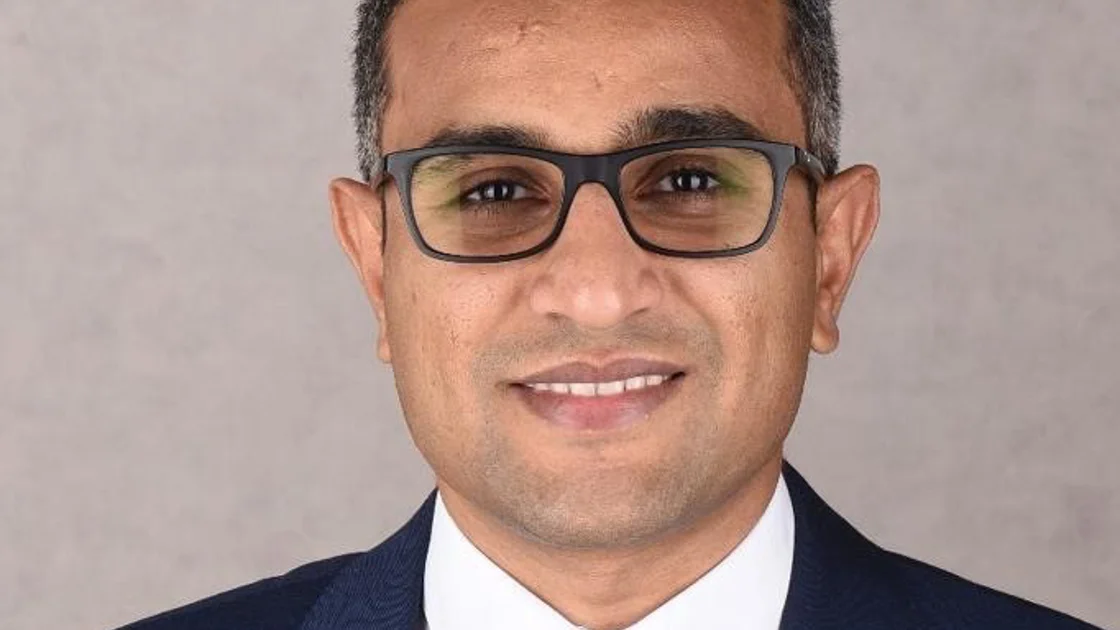Dr Ahmed Bahaa
With a special interest in oral and maxillofacial surgery and a strong commitment to global oral health, Dr Ahmed Bahaa actively supports initiatives that expand access to quality dental care. Dr Bahaa also collaborates with multidisciplinary teams to promote cleft care and surgical education across his region.

In this insightful blog, RCSEd International Dental Ambassador, Consultant Oral and Maxillofacial Surgeon and CEO of Innovinity Egypt, Dr Ahmed Bahaa explores the prevalence, causes, and multidisciplinary treatment of cleft lip and/or palate (CL/P) in Egypt.
Drawing on recent data and highlighting the work of Innovinty Cleft Care in partnership with Smile Train, Dr Bahaa sheds light on the importance of early, comprehensive intervention for one of the most common congenital craniofacial conditions.
The worldwide prevalence of cleft lip and/or palate (CL/P) is approximately 1 in 700 babies, with a rate of 4 cases per 10,000 births in Egypt. Cleft lip is more common than other types, according to the latest prevalence study in Egypt. CL/P results from a combination of environmental factors (such as socioeconomic status, medication, and education) and genetic factors. [1] It is one of the most common congenital craniofacial anomalies. Most treatments for CL/P focus on surgical interventions; however, treatment must involve a multidisciplinary approach that encompasses various areas of expertise, including oral and maxillofacial surgery, plastic surgery, orthodontics, speech therapy, and nutrition. Few centers in the private sector offer this level of comprehensive treatment, with Innovinity Cleft Care being one of the leading centers in Egypt, in collaboration with the Smile Train Foundation. Innovinty Cleft Care developed a comprehensive treatment protocol for CL/P cases in infants.
The comprehensive treatment protocol begins with admitting infants from the first day of birth for early intervention, where infants with CL/P are thoroughly diagnosed and focused on proper feeding, presurgical evaluation, and preparation. A nutritionist guides and advises parents on proper feeding instructions and techniques, depending on the severity of the anatomical defect, whether it is a complete or incomplete cleft lip or palate. Feeding is crucial for infants to reach at least 10 pounds before any lip surgery. Some appliances may help with feeding depending on the severity of the anatomical defect. [2]
The first early clinical intervention is presurgical infants' orthopedic treatment (PSIOT), which begins on the first day of birth and continues until 3 months of age. Infants with complete cleft lip and palate are fitted with naso-alveolar molding appliances, including the modified Greyson NAM and the Dynacleft adhesive tape with an external nasal elevator, to reduce the cleft width and help approximate the cleft edges before any primary surgery. In cases with either cleft lip only or cleft palate only, the focus is on feeding with the use of obturators until the first surgical repair. The PSIOT appliance choice is considered according to the infant's age, feeding ability, and the parents ' compliance. [2]
Primary cleft lip repair is typically the initial surgical procedure, performed between 3 and 6 months of age, depending on the infant's overall health, the outcomes of presurgical evaluation, and laboratory results. Its main goal is to restore lip function by uniting the underlying orbicularis oris muscle, which is vital for feeding, speech, and controlling oral secretions. Several surgical techniques are available for unilateral cleft lip repairs, including the Millard, Fisher, Delare, and Mohler methods, all of which aim to increase lip height on the affected side. Lip repair surgery is performed with minimal nasal dissection to improve nasal outcomes. [2]
Primary palate repair is usually initiated between 9 and 18 months of age. This timing balances the need for proper speech development and feeding with allowing for natural growth of the nasomaxillary complex, since surgical intervention can cause scarring and growth restriction. Different approaches to palatal repair include the Bardach 2-flap technique, Veau-Wardill-Kilner Pushback technique, von Langenbeck bipedicle flap technique, and Furlow double-opposing Z-Plasty. The selected technique should be customized for each patient, aiming for adequate palatal length, repair of the levator veli palatini muscle (intravelar veloplasty), and elimination of anterior palatal fistulae. [2]
After satisfactory primary lip and cleft surgical repair, infants at 3 years of age undergo speech assessment to evaluate velopharyngeal function. Velopharyngeal dysfunction (VPD) occurs due to the failure of the velopharyngeal valve to close properly during oral speech, resulting in hypernasality and nasal air emission. VPD can occur in repaired and unrepaired CL/P, with incidence rates reported as high as 20-50% following palatoplasty. A multidisciplinary team, including a speech and language pathologist (SLP) and a VPD surgeon, conducts speech assessment and velopharyngeal evaluation using the flexible video nasoendoscopy to provide direct visualization of the velopharynx and closure patterns. A perceptual speech evaluation by an experienced SLP assesses hypernasality, audible nasal emission (especially on pressure consonants), and speech misarticulations. Speech therapy continues to resolve any VPD and could be combined with secondary surgeries for the palate or the pharynx. In the preschool age, around 4 years of age, lip revision surgery could be done to enhance labial aesthetics. [2,3]
At the start of the mixed dentition stage at 6 or 7 years old, with the eruption of the first permanent molar, orthodontic corrections are indicated since children suffering from CL/P have collapsed maxillary arches with anterior and posterior crossbites. Depending on the case diagnosis and clinical and radiographic evaluation, orthodontic intervention aims to expand the maxillary arch dimensions to assist in the secondary alveolar bone grafting procedure for cleft palate repair. Communication between orthodontists/pediatric dentists and cleft/craniofacial surgeons is crucial for timing maxillary expansion and grafting, ideally about 6 months before the scheduled maxillary bone grafting. This approach corrects crossbites, makes the maxillary arch compatible with the mandibular arch, and provides access to the graft site. [2]
Patients with CL/P are prone to supernumerary teeth in the cleft site, which are best removed at least 6 weeks before grafting to allow bone fill and mucosal healing. Congenitally missing or malformed lateral incisors adjacent to the cleft are common and may also need extraction before grafting. Secondary alveolar bone grafting in the maxilla is carried out at the ages of 8 to 12 years. A successful graft provides unity to the maxilla, closes any remaining oral-nasal fistula, establishes the nasal skeletal base, and enables the eruption and maintenance of dentition in the cleft area. Grafting must be performed before the tooth erupts into the cleft site. If the cleft is centrally located and a central or lateral incisor might erupt into it, grafting should occur earlier, between ages 5 and 7. If the cleft is more lateral (in the canine area), waiting until ages 7 to 11 may be a safe option. Yearly CBCT scans starting at age five are recommended to evaluate the defect and tooth development. In bilateral CL/P patients, premaxillary repositioning surgery might be needed during maxillary bone grafting if the premaxilla is abnormally positioned to make grafting impossible. It can be safely done during the bone-grafting stage to restore arch structure, improve speech, and eliminate oral-nasal fistulae. This usually happens during the late mixed dentition phase. [2]
Following maxillary bone grafting, a phase of orthodontic treatment is often needed, usually in the maxillary arch. This facilitates the eruption of impacted teeth, corrects anterior cross-bites (which can cause traumatic occlusion), aligns and levels the maxillary arch, and establishes compatible arch forms. Moving permanent teeth roots into the grafted site contributes to graft longevity. Radiographs are taken to ensure the health of the graft before starting this treatment. Bone-anchored plates and Class III elastics can also be used to minimize the need for later orthognathic surgery. [2]
Patients with CL/P almost always require a comprehensive phase of orthodontic treatment once all permanent teeth have erupted. Standard clinical features addressed include maxillary hypoplasia (due to inherent growth deficiency or scarring), Class III dental occlusion, anterior and posterior cross-bites, and reduced anterior facial height. After the completion of orthodontic treatment and growth, tip rhinoplasty may be indicated to enhance nasal esthetics for patients. [2]
The extensive and multi-stage nature of CL/P care underscores the critical importance of a coordinated, multidisciplinary team approach to achieve the best possible long-term functional and aesthetic outcomes for individuals affected by this condition.
References
- Jamil H, Alswairki R, Abdou F, El-Sayed A, Fouda MY, Fahim H, et al. Incidence of Egyptian Live Births of Cleft Lip and/or Palate in Cairo, Luxor, Aswan and New Valley Governorates: A Survey Study in 237,783 Children. Pesqui Bras Odontopediatria Clin Integr. 2019 Oct 31;19(1):e4695.
- Yates D, Allareddy V, Caplin J, Yadav S, Markiewicz MR. An Overview of Timeline of Interventions in the Continuum of Cleft Lip and Palate Care. Oral Maxillofac Surg Clin North Am. 2020 May 1;32(2):177–86.
- Glade RS, Deal R. Diagnosis and Management of Velopharyngeal Dysfunction. Oral Maxillofac Surg Clin North Am. 2016 May 1;28(2):181–8.

